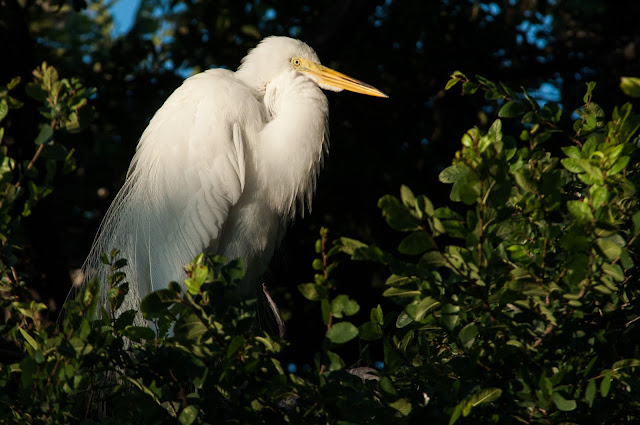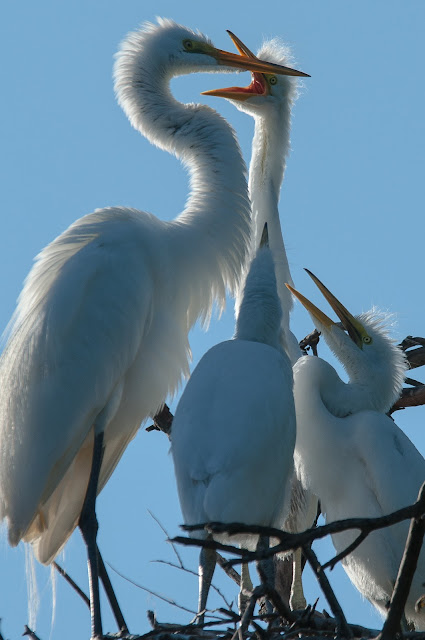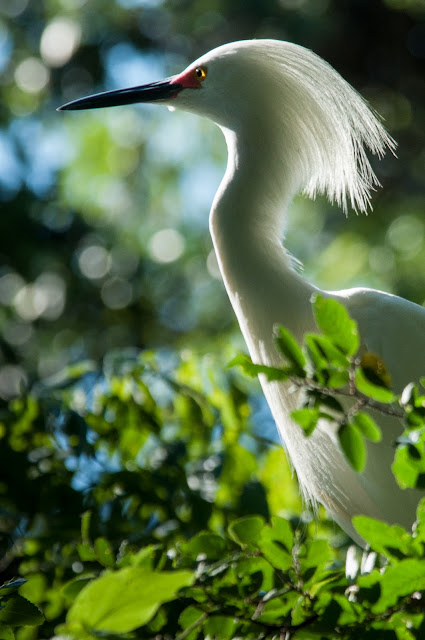The best thing to come out of my Saturday morning visit to the Great Trinity Forest was not the pictures I took. Not by a long shot. Instead, it was the offhanded comment from one of the outing organizers right as I was leaving that if I liked birds, I should Google "UT Southwestern Rookery" and check it out.
Great googly moogly, was he right!
It turns out there is a four-acre nature preserve on the UT Southwestern Medical Center campus in North Dallas that serves as home to hundreds of egrets and herons. Given the forecast for clear conditions Sunday morning -- a rarity of late -- I headed over there at sunrise and walked the trail around the perimeter of the preserve in disbelief.
The great egrets seemed to be the most numerous, but that may just be because they're also the boldest. My presence didn't seem to disrupt or interest them in the least.
Early morning sun provided some nice opportunities for high-contrast shots when a bird was illuminated while the interior of the trees remained dark.
The egrets were clearly still in breeding plumage, with long plumes on their backs and neon green patches on their faces.
Possibly impatient for the sun to rise high enough to hit the branch on which it was perched, this egret took matters into its own hands. Or neck, more precisely.
Given our stretch of wet weather and gloomy skies, I can certainly appreciate the apparent joy at feeling the warm sun again.
I love the light and pose of this one. Dramatic and intense.
I'm not sure when this group hatched. They seemed pretty big to be "babies," but they also didn't seem to have fledged yet. Though at least two of them were flexing their wings quite a bit. They'll probably end up killing the third one, since siblicide is apparently a thing with egrets.
Mom made an appearance with what I assume was a crop full of half-digested fish. Again, the third youngling wasn't as aggressive as the other two. Mom did make sure everyone got some, though.
From a nest with juveniles nearly ready to take flight to a nest still under construction. The male kept dutifully bringing back sticks which the female added to their home.
As the sun ascended, it found holes in the dense trees to shine on smaller birds who weren't as interested in being out in the open such as this snowy egret ...
... and this cattle egret. I also saw trees full of black-crowned night herons that I couldn't get decent shots of, a little blue heron, an anhinga and even yet another bobcat. I shot more than 800 pictures in all before narrowing it down to these dozen to publish, and I can't wait to go back!












No comments:
Post a Comment